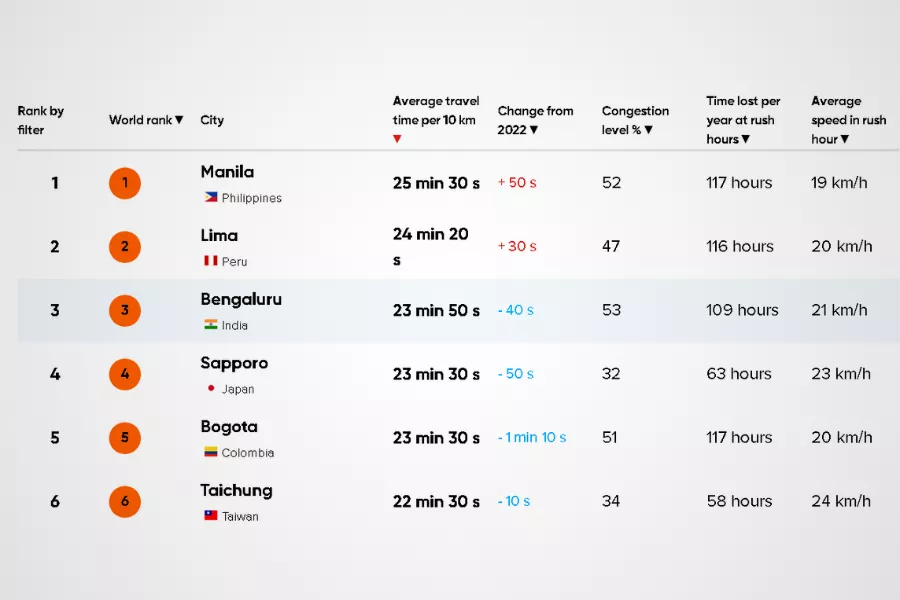A software company that specializes in maps and map-related data has released a global traffic index for 2023 which puts Metro Manila as the world’s number one worst metro area when it comes to traffic.
![The average travel speed during rush hours in 2023 was pegged at a slow 19km/h. [Photo: Meo Fernando] Metro Manila at night.](https://img.philkotse.com/temp/2024/07/26/meo-fernando-traffic-7d19-wm-d2fa.webp)
The average travel speed during rush hours in 2023 was pegged at a slow 19km/h. [Photo: Meo Fernando]
The said 2023 traffic index, which was published by Netherlands-based company TomTom, shows the average time to travel per 10 km, congestion level, and time lost per year during rush hours. The data from the index was taken from a study that covered over 387 cities across 55 countries.
With that said, the index shows that Metro Manila saw a 52 percent level of congestion last year. Those who traveled a distance of 10 km within the Philippine metro in 2023 did this at an average of 25 minutes and 30 seconds with an average 19 km/h speed during rush hour. This leads to a total of 117 hours lost to rush hour traffic within 2023.
Note also that the average travel time per 10 km for 2023 is 50 seconds slower compared to the company’s data for 2022. This simply means that Metro Manila saw an uptick in congestion last year.
The other metro areas that made it to the company’s top five worst traffic index for 2023 are Lima, Peru at rank 2, Bengaluru in India at rank 3, Sapporo, Japan at rank 4, and Bogota, Colombia at rank 5.

The top five metro areas with the worst traffic from TomTom's 2023 traffic index
Also for perspective, the best, or least congested metro area in the world according to the firm’s 2023 traffic index was Greensboro-High Point in North Carolina, USA. In this Mideast American city, it takes just eight minutes to travel 10 km. It also saw 10 percent congestion, nine hours lost in rush hours in a year, as well as an average speed of 71 km/h during rush hours.
As a side note, the study on which the index is based takes into account multiple factors like road infrastructure, street capacities, speed limits, observable traffic congestion, and traffic flow, among others.
On a smaller scale, it also considers floating car data (FCD) which is geo-localized data collected from moving vehicles by tracking smartphones and global positioning systems.
Do you agree with the study? Do you see our traffic situation improving or worsening in the coming years?
For more car news and automotive industry updates, keep it here on Philkotse.
Recent posts
- ncr mayors approve single ticketing Feb 13, 2023
- metro manila traffic code draft approved Jan 20, 2023
- traffic signs different shapes Sep 27, 2022
- 7 Most Expensive Fines for Traffic Violations in the Philippines (MMDA) Nov 08, 2022












